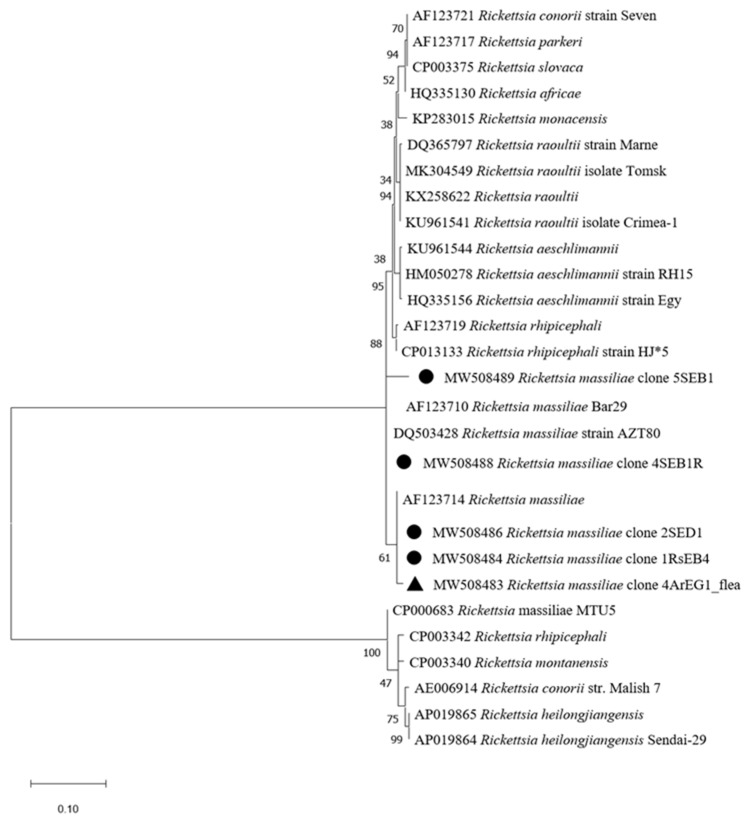Figure 4.
Phylogenetic analysis of ompB sequences of Rickettsia spp. Phylogenetic analysis of ompB sequences of Rickettsia spp using the maximum likelihood method based on the Tamura–Nei model. In the phylogenetic tree, GenBank sequences, species designations and strain names are given. The sequences investigated in the present study are marked with a black circle for the R. massiliae sequence recovered from Rhipicephalus sanguineus ticks and a black triangle for R. massiliae recovered from Achaeopsylla erinacei fleas. The tree with the highest log likelihood (−1768.76) is shown. The percentage of trees in which the associated taxa clustered together is shown next to the branches (bootstrap values). The rate variation model allowed for some sites to be evolutionarily invariable ([+I], 16.94% sites). The tree is drawn to scale, with branch lengths measured in the number of substitutions per site. This analysis involved 28 nucleotide sequences. There were a total of 662 positions in the final dataset.

